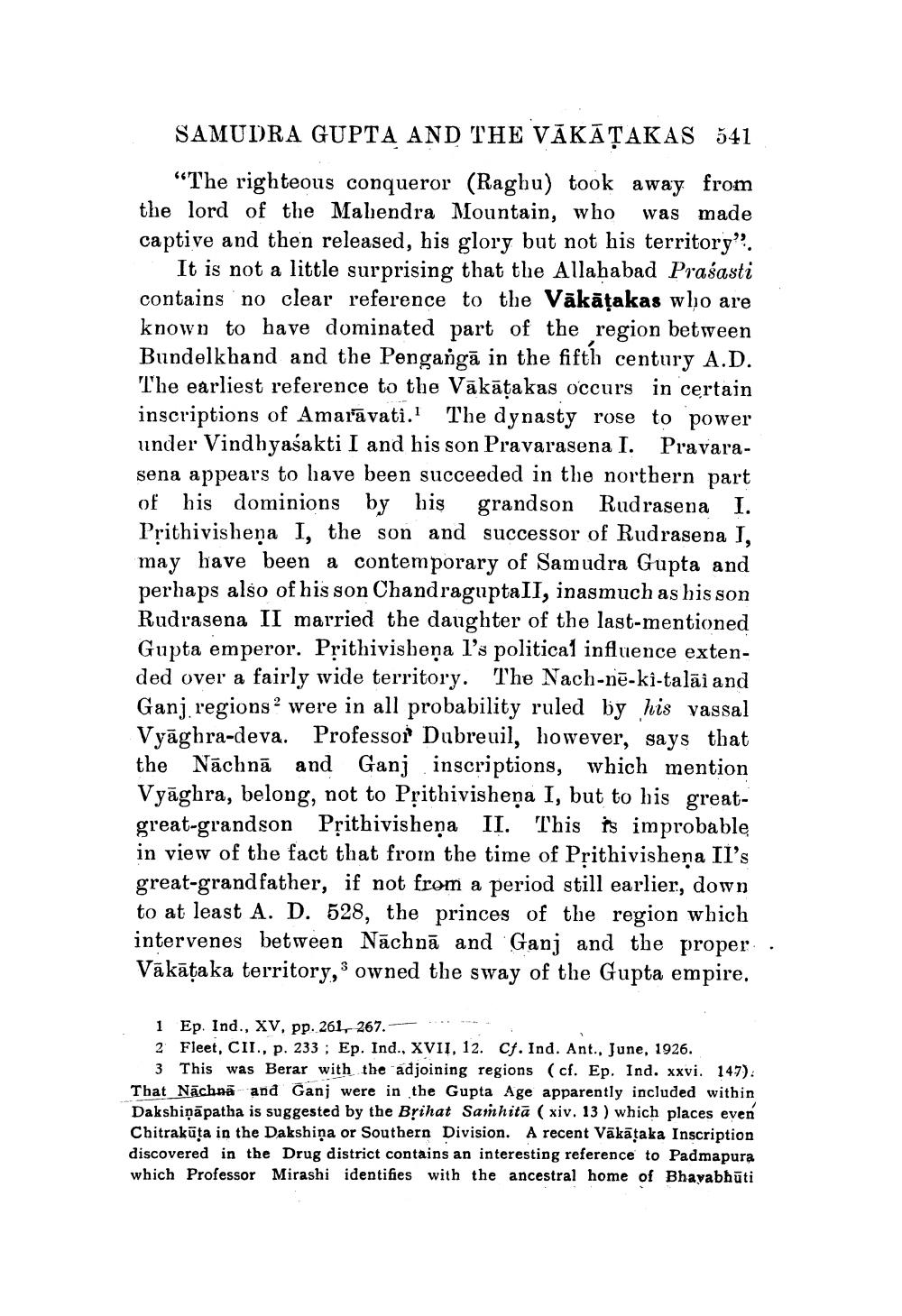________________
SAMUDRA GUPTA AND THE VĀKĀTAKAS 541
“The righteous conqueror (Raghu) took away from the lord of the Mahendra Mountain, who was made captive and then released, his glory but not his territory”.
It is not a little surprising that the Allahabad Prasasti contains no clear reference to the Vākāțakas who are known to have dominated part of the region between Bundelkhand and the Pengangā in the fifth century A.D. The earliest reference to the Vākāțakas occurs in certain inscriptions of Amaravati.' The dynasty rose to power under Vindhyasakti I and his son Pravarasena I. Pravarasena appears to have been succeeded in the northern part of his dominions by his grandson Rudrasena I. Prithivishena I, the son and successor of Rudrasena I, may have been a contemporary of Samudra Gupta and perhaps also of his son Chandraguptall, inasmuch as his son Rudrasena II married the daughter of the last-mentioned Gupta emperor. Prithivisbeņa l's political influence extended over a fairly wide territory. The Nach-nē-ki-talāiand Ganj regions? were in all probability ruled by his vassal Vyāghra-deva. Professor Dubreuil, however, says that the Nāchnā and Ganj inscriptions, which mention Vyāghra, belong, not to Prithivisheņa I, but to his greatgreat-grandson Pșithivisheņa II. This is improbable in view of the fact that from the time of Prithivisheņa Il's great-grandfather, if not from a period still earlier., down to at least A. D. 528, the princes of the region which intervenes between Nāchnā and Ganj and the proper: . Vākāțaka territory, owned the sway of the Gupta empire.
1 Ep. Ind., XV. pp. 261, 267. 2 Fleet, CII, p. 233; Ep. Ind., XVII, 12. Cf. Ind. Ant., June, 1926.
3 This was Berar with the adjoining regions (cf. Ep. Ind. xxvi. 147). That Nāchna and Ganj were in the Gupta Age apparently included within Dakshiņāpatha is suggested by the Brihat Samhitā (xiv. 13 ) which places even Chitrakūta in the Dakshiņa or Southern Division. A recent Vākāțaka Inscription discovered in the Drug district contains an interesting reference to Padmapura which Professor Mirashi identifies with the ancestral home of Bhavabhūti




